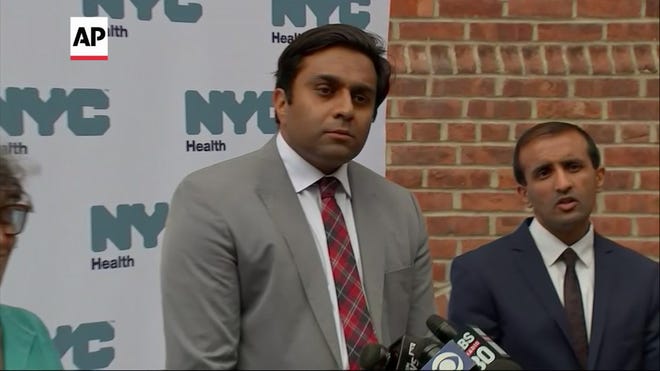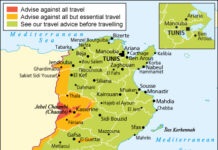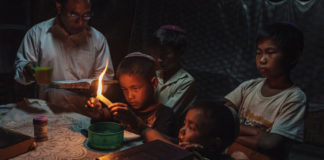To provide our community with important public safety information, The Register-Guard is making this information related to the monkeypox virus free to read. To support important local journalism like this, please consider becoming a subscriber.
As the first monkeypox cases emerge in Oregon, including three known in Lane County, health officials are advising information-sharing, testing, vaccination and treatment as part of the statewide response to the national outbreak.
At least seven cases of the monkeypox virus have been identified in Oregon.
Lane County Public Health spokesman Jason Davis said a third Lane County case was confirmed by a state laboratory Thursday, and the county is waiting for federal lab confirmation of all its cases. Four other state casesare pending at the state laboratory.
More:Lane County identifies two cases of monkeypox; nearly 400 cases found nationwide
“This is not just a global problem, a national problem or even an Oregon problem anymore, this is a Lane County problem. It’s circulating within our community,” Davis said. “There’s probably a lot more than we know about.”
The other cases were found in Multnomah and Washington counties, according to the Oregon Health Authority.
No deaths have been reported, but the disease can be severe, potentially causing rashes, infections or sepsis.
Two vaccines licensed by the U.S. Food and Drug Administration are available for preventing monkeypox infections. OHA said Oregon’s supply is limited but allocations from federal stockpiles have arrived and likely will be increased.
Health officials are advising people consider their risk factors, including intimate behaviors, to reduce infection risks.
Below is some information on current cases in Oregon, as well as prevention tips and advice in case symptoms arise.
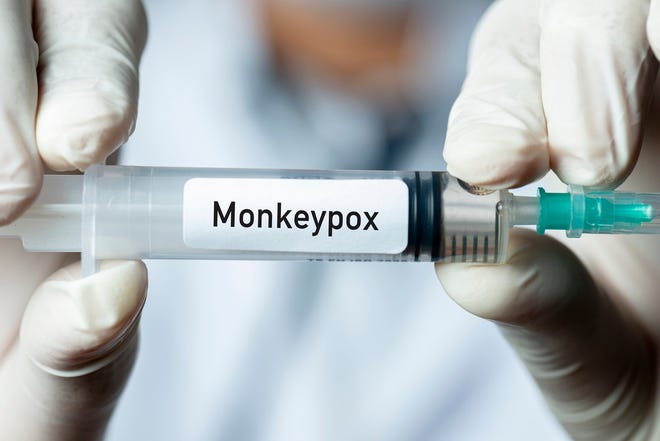
What is monkeypox?
Infections are caused by a the human monkeypox virus, also known as hMPXV.
The monkeypox virus first was discovered in 1958 in colonies of research monkeys, according to the U.S. Center for Disease Control and Prevention. The first human case was recorded in 1970.
Nearly all human cases before the 2022 outbreak outside of Africa were linked to international travel to countries where the disease commonly occurs or through imported animals, according to the CDC.
The strain of monkeypox causing the current outbreak — the West African strain — is rarely fatal, according to the CDC. However, people with weakened immune systems, children younger than 8, people with a history of eczema and people who are pregnant or breastfeeding may be more likely to get seriously ill or die, the CDC said.
The symptoms can be extremely painful and can include fever, headache, muscle aches, swollen lymph nodes, chills, exhaustion and a rash that can look like blisters appearing nearly anywhere on the body that may cause permanent scarring.
The illness typically lasts two to four weeks, according to the CDC.
How does it spread?
The virus can be spread through direct contact with the infectious rash, scabs or body fluids. The virus also spreads by respiratory secretions during prolonged, face-to-face contact, or intimate physical contact, such as kissing or sex.
Monkeypox isn’t considered a sexually transmitted infection. Anyone with close contact to an infection can catch it.
Pregnant people can spread the virus to their fetus through the placenta, according to the CDC.
Touching items, such as clothing or linens, that previously touched the infectious rash or body fluids is another way monkeypox spreads, according to the CDC.
It’s also possible for people to get monkeypox from infected animals, either by being scratched or bitten by the animal or by eating the meat or using products from an infected animal.
People who do not have monkeypox symptoms cannot spread the virus to others.
Globally, nationally and in Oregon, hMPXV was initially associated with travel to non-endemic countries with reported hMPXV cases, according to the release. However, more recent cases do not have a history of travel.
Davis said the first-identified case in Lane County did not have a recent history of travel. Davis said additional local cases were later found through contact tracing, but the nature of any epidemiological link still is being investigated.
“We believe that we have a pretty solid idea of the social network of this individual and that we had quite a bit of robust communication with the people that individual had contact with. We’re hoping, somewhere in the mix, we identify the individual this person got hMPXV from,” Davis said. “The nature of the contact is still being sussed out.”
Davis said there is likely an epidemiological link, which would give public health officials a head start containing it. But he said other, unknown cases may exist which are affecting different social circles or are being otherwise spread.
“There’s a lot of unknowns for us,” Davis said.
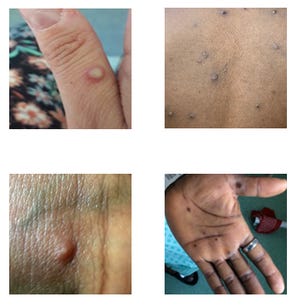
Who is being affected?
All seven currently reported monkeypox cases in Oregon are among men, according to OHA.
Dr. Tim Menza, senior health advisor for OHA’s hMPXV response, said the agency’s focus has been communicating widely and often to communities at highest risk for hMPXV about preventing its spread, when to get tested and how to access vaccines and treatment. The agency is also sharing information with the medical community, including providing guidance on case definitions, testing procedures and how health care providers can recognize symptoms.
“While anyone can be affected by hMPXV, the current global outbreak of hMPXV has largely affected gay, bisexual and other men who have sex with men,” Menza said in a news release.
“I point this out not to say that men who have sex with men are the only people at risk for hMPXV, but that right now our priority should be empowering men who have sex with men and the larger LGBTQIA+ and queer community and their health care providers with information, testing, prevention and treatment strategies.”
Communication has included a community letter that OHA, the Multnomah County Public Health infectious disease team and local providers jointly issued in advance of Pride events that began last month in Oregon, according to the release. An OHA team also is working with community-based organizations to develop culturally tailored awareness and prevention messaging. OHA is providing regular updates and data through social media platforms.
There are at least 700 confirmed monkeypoxs cases nationwide, according to the CDC website, which also reports that “early data suggest that gay, bisexual, and other men who have sex with men make up a high number of cases.”
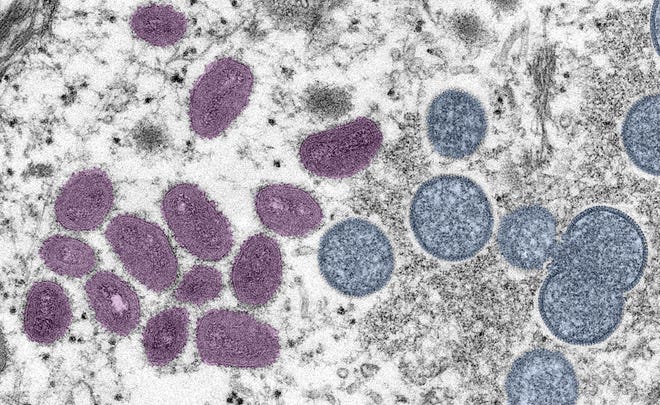
How do I avoid infection?
The CDC recommends the following steps to prevent getting monkeypox:
- Avoid close, skin to skin contact with the monkeypox rash.
- Do not touch the rash or scabs of person with monkeypox.
- Do not kiss, hug, cuddle or have sex with someone with monkeypox.
- Do not share eating utensils or cups.
- Do not handle or touch the bedding, towels, or clothing of a sick person.
- Wash hands often with soap and water or alcohol-based hand sanitizer, especially after contact with sick people.
The virus can spread from the time symptoms start to when sores and scabs have healed with a fresh layer of skin.
Menza advised people planning to attend a festival, concert, party or other event to be conscious of the virus.
“We can think about risk on a spectrum,” Menza said in the release. “For example, events like sporting events or concerts, where people are more likely to be fully clothed and unlikely to have skin-to-skin contact, are safer, compared to clubs and parties where people are wearing minimal clothing and there is often skin-to-skin contact or spaces like saunas, bathhouses or sex clubs, where there is minimal to no clothing and often sexual contact.”
Menza added that those thinking about sex should check in with their partners.
“Tell them how you are feeling, whether you’ve had any recent illness or rashes, especially on the genitals or around the anus, and invite them to do the same,” Menza said. “If you or your partner have been sick recently, are currently sick, or have any new rashes, avoid close, personal and skin-to-skin contact, and talk to a health care provider.”
A person who is sick with monkeypox should isolate at home. People who have an active rash or other symptoms should be in a separate room or area from other family members and pets when possible, according to the CDC.
Can I get a vaccine?
The CDC does not recommend widespread vaccination against monkeypox at this time, according to its website. However, vaccination may be recommended for some people who are close contacts of people with monkeypox, have been exposed to the virus or those with increased risk of being exposed, such as people who perform lab tests.
In the United States, there is currently a limited supply of one vaccine, Jynneos, although more is expected in coming weeks and months, according to the CDC. There is an ample supply of the other, ACAM2000, but it should not be used in people who have some health conditions, including a weakened immune system and skin conditions.
People are considered fully vaccinated about two weeks after their second shot of Jynneos and four weeks after receiving ACAM2000, according to the CDC. People who have been vaccinated should continue to take precautions.
People can be vaccinated following exposure to monkeypox to help prevent illness from monkeypox virus.
No data is available yet on the effectiveness of these vaccines in the current outbreak, according to the CDC.
More:Oregon expanding monkeypox vaccines as cases explode across U.S.
OHA is now allowing health care providers to send monkeypox tests directly to the state public health laboratory without prior approval, which previously had been required, or directly to the private lab testing chain LabCorp.
The turn-around time for health care providers to get test results is one to three days through a private laboratory. Other private labs are expected to begin offering testing in the coming weeks.
The U.S. Department of Health and Human Services recently reported about 296,000 doses of Jynneos will be shipped out in the next few weeks. Oregon has received nearly 200 doses of the two-shot vaccine, Menza said.
The state has reserved those doses for people who have likely already been exposed to monkeypox.
OHA has distributed at least 26 doses to local public health authorities. At least eight doses have been administered.
Lane County, so far, has received 10 total doses, Davis said. Two of those doses were administered to patients as a pre-exposure prophylaxis and three were used as a post-exposure prophylaxis, Davis said.
Vaccination involves two doses given under the skin four weeks apart and can be given within 14 days of exposure to prevent hMPXV infection, according to OHA.
Menza said he hopes to expand vaccine availability to beyond just those who have been exposed to the virus.
“When more vaccine becomes available, our goal is to offer vaccination to those at increased risk of exposure to hMPXV, including cisgender and transgender men who have sex with men and transgender women who have sex with men with more than one sex partner in the prior two weeks,” Menza said in the release.
Salem Statesman Journal report Tracy Loew contributed to this story.
Contact reporter Adam Duvernay at aduvernay@registerguard.com. Follow on Twitter @DuvernayOR.

